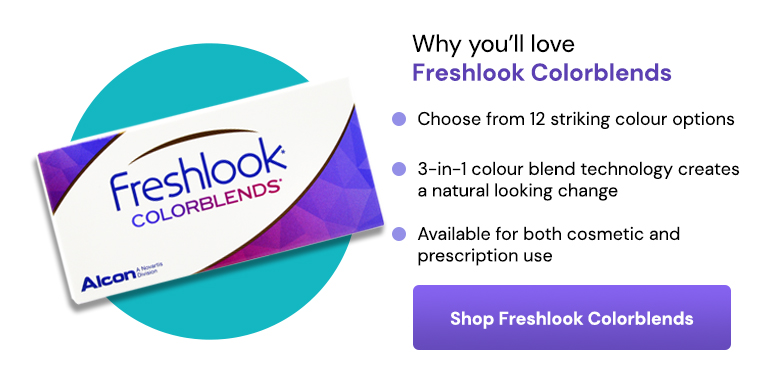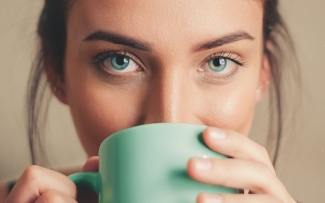5 facts about eye colour
Countless poets and artists have romanticised eye colour, but science suggests that it can reveal a whole lot more than you think.
Research has shown that eye colour can tell us a lot about our health, and some say it’s even tied to personality traits. To get the facts, we’ve asked in-house optometrist, Roshni, to dig a little deeper into the meanings behind different eye colours.
FACT: All human eyes are actually brown

Our eyes appear to be various shades of blue, green and hazel, but these pigments are never present in the human eye. So what gives eyes their colour?
It all comes down to the amount of melanin present in the iris (the coloured ring around the pupil). Melanin is naturally dark brown and is the same pigment that determines our skin and hair colour. The more melanin in the iris, the darker the eye colour.
Eye colour also depends on how light is scattered as it passes through the eye. Melanin absorbs light and stops it from reflecting back off the eye’s surface, giving rise to a darker colour.
The opposite is true for light eyes. ‘Baby blues’ have small amounts of melanin, so more light is reflected out of the eye. This process is called the Tyndall effect, a similar phenomenon that makes the sky look blue.
FACT: Blue eyes are more sensitive to light

Melanin acts as a kind of protector from the sun, blocking UV light. Because blue eyes contain less melanin, they tend to be more sensitive to light and more susceptible to damage from UV rays.
Research suggests that people with lighter eyes may be more at risk of developing age-related macular degeneration. No matter what colour your eyes are, wearing sunglasses will help protect them from the sun. If you wear contacts, UV-blocking lenses can provide that extra layer of protection.
MYTH: People with brown eyes have faster reaction times

There is some evidence to suggest that brown-eyed people have slightly faster reaction times in sports such as boxing, football and baseball. If you have blue eyes, you’re likely better at self-paced activities, like bowling or playing golf. However, more research is needed to support these theories.
FACT: Eye colour changes with age

For most people, eye colour is fixed from around the age of one. However, around fifteen per cent of the caucasian population experience a gradual change in eye colour later in life.
A change in hue can be indicative of certain diseases, such as Horner’s syndrome or pigmentary glaucoma. Horner’s syndrome is a rare condition caused by damage to the string of nerves that are responsible for dilating the pupil and raising the eyelid. Those who develop Horner’s may have a lighter iris in the affected eye. Pigment glaucoma, on the other hand, usually makes the iris appear darker. The change in colour is caused by the shedding of pigment. Additionally, certain glaucoma eye drops can also cause the eye to darken.
As with most diseases, both conditions are best caught early. That’s why it’s so important to attend regular eye checks – even if you have 20/20 vision. However, if you notice any extreme changes in eye colour, we recommend visiting your optician straight away.

Myth: Eye colour can change with mood

Eye colour doesn’t actually change with mood. Irises work like camera shutters. They expand and contract to allow the pupils to grow or shrink for optimal vision. A lot of this is down to the amount of light entering the eye – the darker the room, the more dilated our pupils will be. Our eyes also widen in response to certain emotions, like fear or happiness, which can make our eyes appear darker.
Fancy trying a new look? The easiest and safest way to temporarily change your eye colour is with coloured contact lenses. Check out our handy guide to find the perfect match for any occasion.
The final word
Eye colour can reveal a whole number of things, from how susceptible we are to certain conditions to how quick we are on the sports field. Although most of the research is based on small study samples, these ideas have paved the way for more exciting discoveries in this area.
If you want to try a different eye colour or even enhance an outfit or costume with different coloured eyes why not take a look at our wide range of coloured contacts. This is your chance to see how the other half live!
Article originally posted in October 2020. It has since been updated.



